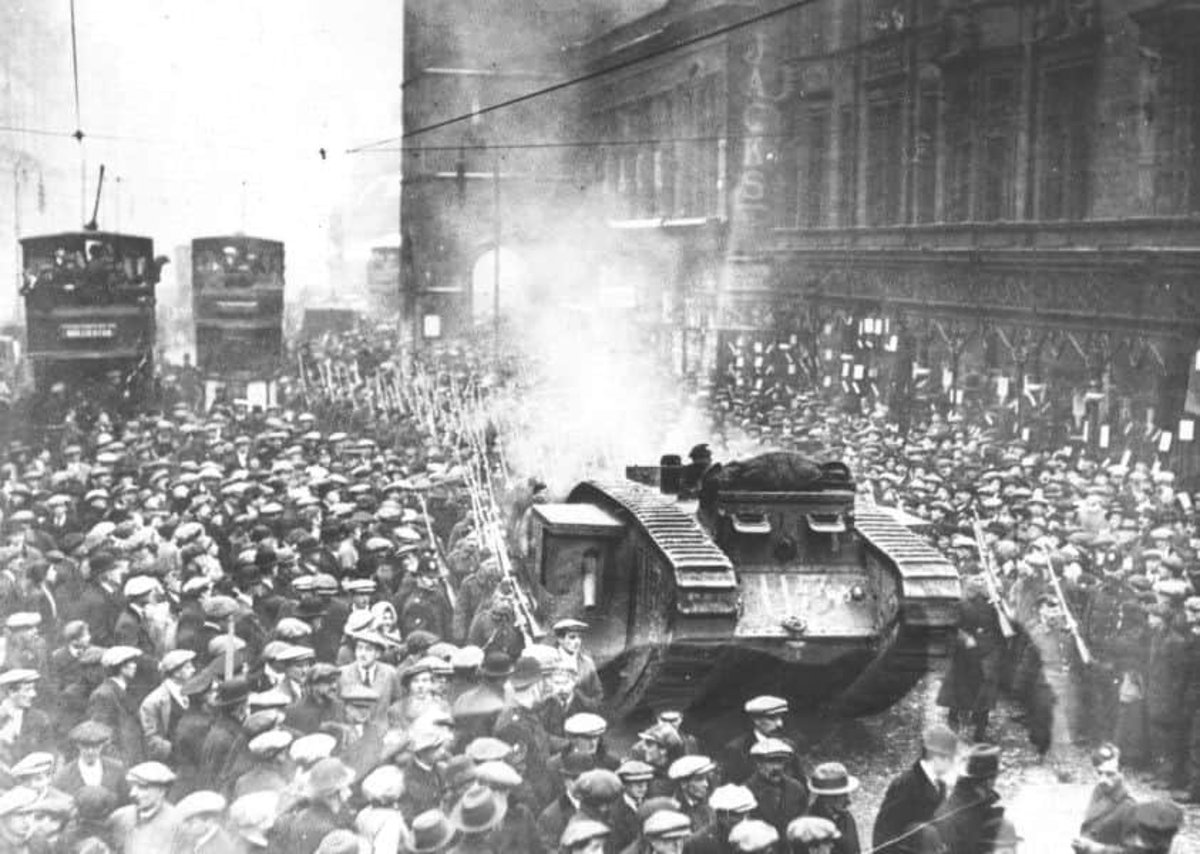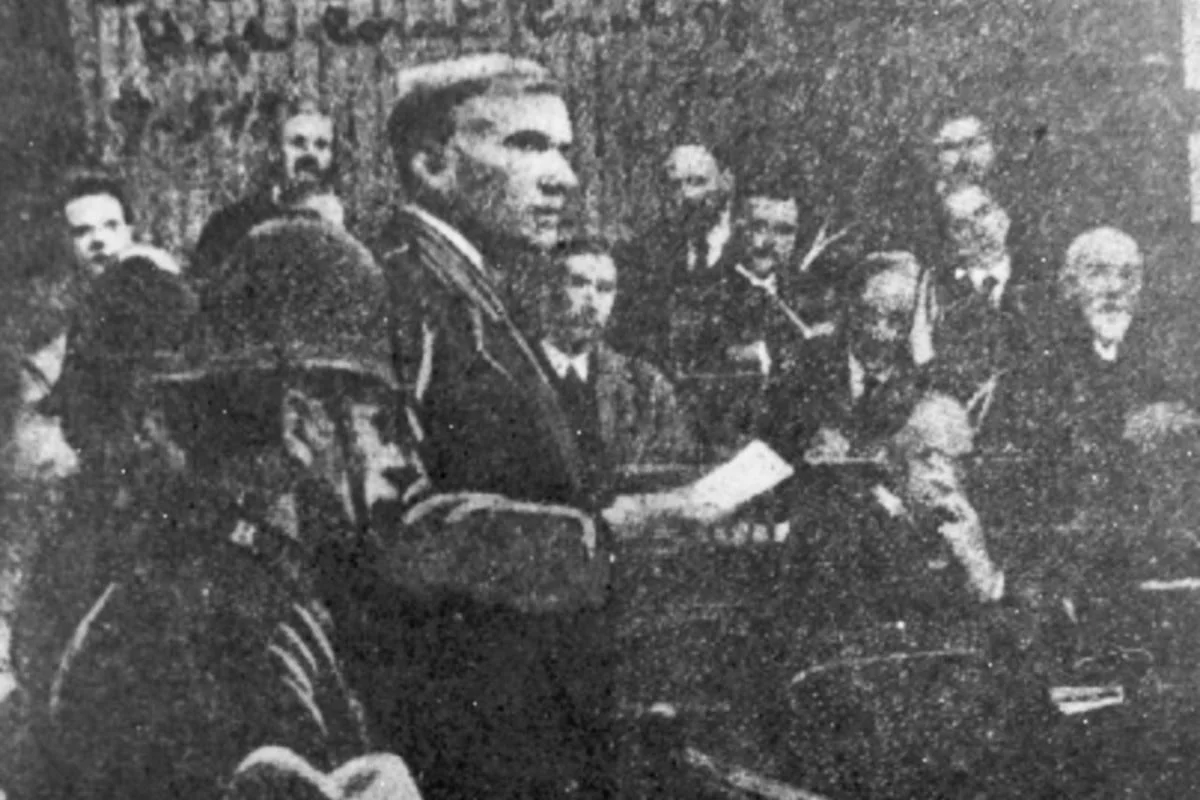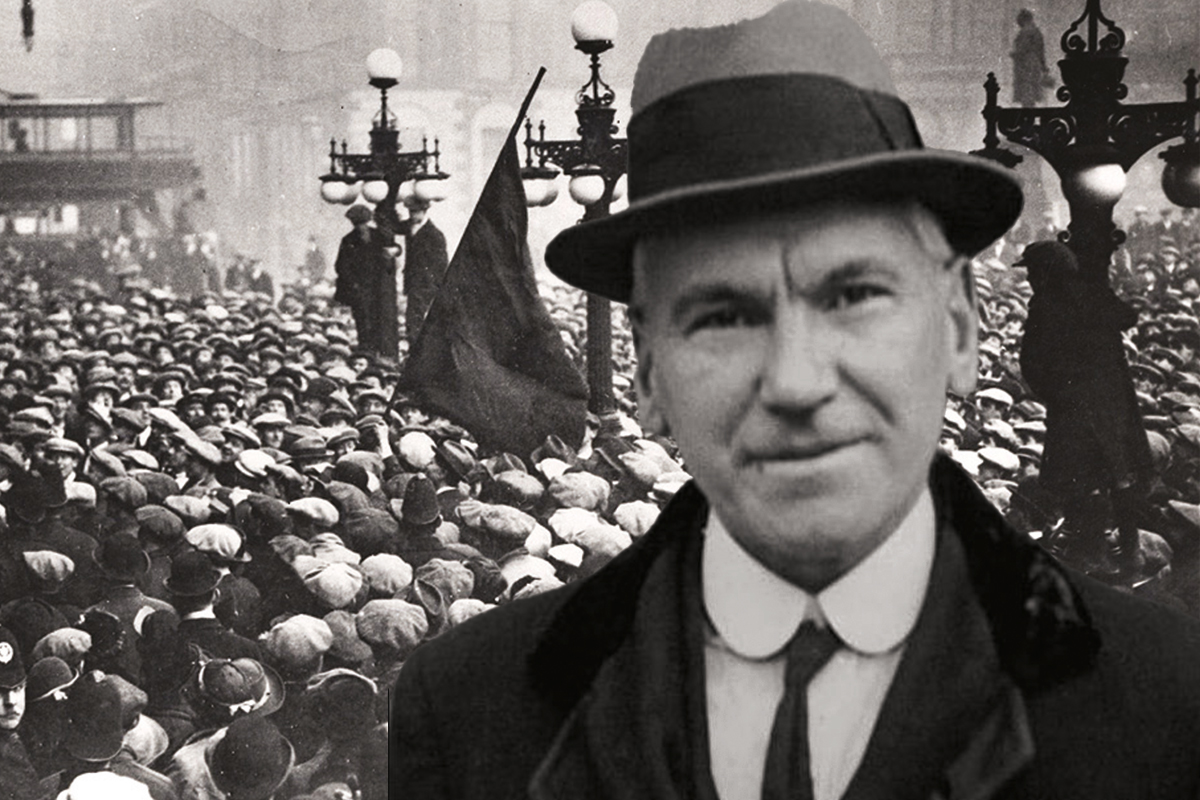Today is the centenary anniversary of the death of John Maclean, a dedicated Marxist and class fighter, famous for playing a leading role in militant workers’ movements such as Red Clydeside in Glasgow. We pay tribute to his revolutionary legacy.
[Originally published at socialist.net]
30 November marks 100 years since the death of one of Britain’s greatest revolutionaries: John Maclean.
Maclean sacrificed much of his life for the class struggle. He was persecuted by the establishment for his vocal opposition to imperialism and capitalism.
One hundred years after his premature death, with the world still shaken by imperialist wars such as that in Ukraine, we must look to the legacy of figures like Maclean for inspiration.
Marxist educator
John Maclean was born in 1879 in Pollokshaws, then on the outskirts of Glasgow, to parents who had come to Glasgow following the Highland clearances.
Following the death of his father, Maclean saw his mother struggle to raise a family of six children. This influenced his decision to become a socialist and join the Socialist Democratic Federation (SDF) in 1903.
Maclean was an extremely active SDF member, particularly through his educational work. He worked as a school teacher. And he carried his pedagogical practices over into his political work, organising evening, weekend, and summer classes to teach workers about Marxism. At their height, in 1919, Maclean ran a total of 43 classes, with over 2,000 workers attending.
Red Clydeside
One of Maclean’s key contributions to socialism was his activity in opposing World War One. In doing so, he stood apart from the vast majority of so-called socialists internationally, including those in the British Socialist Party (BSP), the successor to the SDF.
 6 tanks were brought in to suppress striking workers in the Battle of George Square, 1919 / Image: public domain
6 tanks were brought in to suppress striking workers in the Battle of George Square, 1919 / Image: public domain
Due to the BSP’s pro-war stance, Maclean worked with a small group of followers to carry out his anti-war propaganda in Glasgow.
As workers became more and more frustrated with the war, and their treatment by the ruling class, Maclean and other socialists started to attract a wider following. And from this, the events of ‘Red Clydeside’ evolved.
The 1915 rent strike was a key episode within Red Clydeside. Maclean and other socialists, such as Mary Barbour, successfully led tenants in a militant movement against landlords, who were opportunistically raising rents as munitions workers moved into the city.
Following on from this victory, Maclean increased his support, with around 500 workers regularly attending his Sunday economics class, and many thousands going to his open meetings held in Glasgow city centre.
Accuser of capitalism
The ruling class was increasingly worried by Maclean’s work. As a result, he was arrested for sedition in February 1916 and sentenced to three years of hard labour.
Following the February revolution in Russia, which saw the overthrow of the Tsar, militancy in Glasgow grew. On May Day 1917, 250,000 lined the streets calling for Maclean’s release. The ruling class feared that Glasgow would follow in Petrograd’s footsteps, and so Maclean was released in June of that year.
After the Russian Revolution, Maclean was made Russian Consul for Glasgow by the Bolsheviks. In this capacity, he addressed many ‘Hands Off Russia’ rallies.
With the Glasgow working class becoming more and more militant, and the ruling class fearing a revolutionary outbreak, Maclean was again imprisoned for sedition in April 1918.
It was during this trial that he made his famous speech from the dock: “I am not here, then, as the accused; I am here as the accuser of capitalism, dripping with blood from head to foot.”
Militant struggle
 MacLean delivering his speech from the dock, 1918 / Image: public domain
MacLean delivering his speech from the dock, 1918 / Image: public domain
Maclean was released in November 1918, after the armistice. A huge crowd came to greet him as he got off the train from Peterhead jail in Glasgow city centre.
The next few months saw Maclean leading the militant struggle for a 40-hour week in Glasgow. This culminated in the battle of George Square in January 1919, as tanks and troops from across Britain were brought in to stem the movement.
Following the defeat of the 40-hours movement, the working class in Glasgow went into retreat.
Maclean continued with his educational classes. But, having spent much of his adult life in prison, including a period of hunger strike and forced feeding during 1918, he died in 1923 at the age of just 44.
For Marxists today, Maclean leaves behind an important legacy: providing an inspiring example of how Marxist ideas can take root within the working class, and showing the importance of Marxist education.
